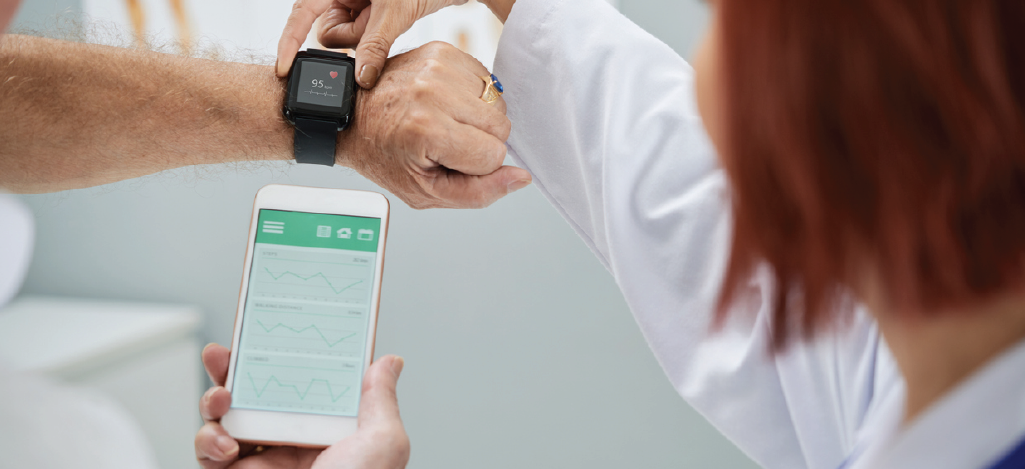Technology plays a pivotal role in enhancing patient engagement. Learn more as we explore how it can improve your practice's operations.
Patient engagement and patient experience have become strategic priorities for healthcare organizations looking to improve satisfaction, outcomes, and cost efficiency. However, brief in-person encounters and limited between-visit care present more than a few challenges. Fortunately, advances in technologies (i.e. patient portals, telehealth, remote monitoring devices, and digital payment platforms) are providing new channels to strengthen patient-provider connections that go beyond the practice setting.
Leveraging Patient Portals for Seamless Communication
One of the engagement solutions that is being adopted by more healthcare providers and their patients has been patient portals connected to electronic health record (EHR) systems. While about 40% of U.S. patients access the patient portal offered by their providers, the studies suggest that the numbers have increased in recent years. For healthcare organizations, the benefits of offering patient portals include reduced phone call volumes, paperwork, and mailing costs. By enabling patients to conveniently access information online, portals save time for both patients and staff.
Some key features offered by portals include:
- Secure messaging with the care team for any questions or matters that are not urgent
- Self-scheduling and managing appointments
- Accessing lab/test results
- A medication list
- Patient health record access for coordinating care
- Reviewing visit summaries after appointments
The Mayo Clinic is one of many healthcare institutions that has taken unique steps to elevate its patient experience through its patient portal. By implementing new approaches, the healthcare institution is optimizing communication and patient involvement. Their leaders introduced a Google Assistant voice-powered web chat, allowing patients to access health and wellness information from the comfort of their homes. This innovation also personifies a commitment to enhancing patient engagement and healthcare delivery.
Telemedicine: Bridging Gaps for Convenient Care

Telemedicine uses technology to deliver remote healthcare services through video visits. This allows providers to virtually consult with established patients as well as offer urgent care nights and weekends. The convenience of seeing a doctor from home engages patients who may delay care due to busy schedules, mobility limitations, lack of transportation, or long in-office wait times.
Remote monitoring platforms further strengthen patient engagement by collecting health metrics from chronically ill patients between visits. Providers can check dashboards for concerning changes and intervene early. To maximize telemedicine, health systems must ensure extensive provider availability, user-friendly interfaces, seamless visit workflows, and patient training.
Some of today's most impactful telemedicine models include:
- Synchronous video visits with providers for both urgent needs and routine appointments
- Remote patient monitoring programs for chronic disease management
- E-consults that allow providers to virtually speak with specialists
- Digital clinics offering virtual urgent care visits with a physician on demand
According to an analysis conducted by McKinsey, the use of telehealth appointments or remote healthcare interactions has the potential to result in savings of around $250 billion each year within the populations that are covered by these services.
As telemedicine becomes further integrated into care delivery models, patient engagement is expected to continue improving through virtual access.
Wearable Devices and Health Apps: Empowering Patient Self-Management
Whether smartwatches and fitness trackers or blood pressure monitors and glucose meters, wearables allow patients to monitor a range of health metrics from the comfort of their own homes. Wearable technology, along with health apps, will continue to have a growing role in engaging patients in their wellness. As the adoption of wearables rises, more healthcare organizations are integrating these tools into care plans to encourage patients to take charge of their data.
Some ways these tools promote engagement include:
- Monitoring vitals (i.e. heart rate, sleep patterns, activity levels)
- Medication reminders and tracking for those who have chronic conditions
- Managing conditions like diabetes and hypertension
- Symptom trackers that identify health changes to share with providers
Wellness apps further engage patients by providing insights and lifestyle recommendations based on the collected data. This allows providers to deliver personalized, proactive care. To boost adoption, providers should prescribe specific devices, incentivize data sharing, display patient data visualizations in the EHR, and consistently review the information during visits. Right now, too much data is going unused because the wearables are not being properly integrated. Properly using wearable data provides benefits for both patients and providers.
Digital Payments: Modernizing Patient Experiences

An often-overlooked opportunity to leverage technology for improving patient engagement relates to digital payments. Streamlining the payment experience through secure online portals, price transparency tools, and flexible financing options can greatly impact patient financial satisfaction.
Online payment portals allow patients to:
- Securely store payment methods and preferences
- Access billing histories and statements
- Manage automated payments after insurance
- Conveniently and securely pay their bill using their preferred payment method
Digital payment options like payment plans also simplify the financial experience for patients who are having financial difficulties. Allowing patients to store payment methods, view billing history, and automate payments enables convenience and cost visibility. Digital notifications further modernize the process—especially when using proactive payment tools like:
- Paperless billing with email/text notifications
- Reminders before payments are due
- Links to online portals within notifications
Overcoming Challenges and Ensuring Data Security
While technology unlocks enormous potential for advancing patient engagement, some challenges must also be addressed:
- Maintaining human relationships
- Building smooth workflows to incorporate these tools into practice
- Training providers and staff on effective utilization
- Achieving high levels of adoption and regular use of tools by patients
- Ensuring solutions comply with changing regulations around data privacy and consent
Patient trust is critical, so transparency around how data will be managed and leveraged to improve care is important. Allowing patients to adopt new technologies gradually can ease concerns. Getting feedback from patients on preferences is key, as well as ensuring both high-tech and high-touch care options based on individual needs.
As digital transformation accelerates, healthcare providers must make patient engagement central to care delivery. Technology plays a pivotal role in fostering true partnerships between empowered patients and providers.
Moving Forward

As a healthcare provider, you will need to connect with forward-thinking partners to ensure you offer convenient payment options that match digital patient expectations. Ultimately, technology will continue advancing patient empowerment and engagement, leading to better health outcomes for all.
Why wait until tomorrow to be proactive in using technology for next-generation engagement that drives better experiences — especially when you can do it today? BillFlash Pay Services exemplifies the modern financial experiences that lead to higher engagement.
Schedule a demo today!

